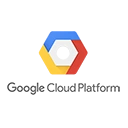The Google Cloud Vision API is a machine learning service that enables developers to integrate image recognition capabilities into their applications. In this guide, we'll explore the fundamentals of the Google Cloud Vision API and provide a sample Python code snippet for performing image recognition using the API.
Key Concepts
Before we dive into the code, let's understand some key concepts related to the Google Cloud Vision API:
- Image Analysis: The Vision API can analyze images to extract valuable information, such as labels, text, faces, and landmarks.
- Use Cases: The Vision API is used for various applications, including content moderation, document analysis, image search, and much more.
- Machine Learning: The API uses machine learning models to recognize objects, text, and other elements in images.
Sample Code: Performing Image Recognition
Here's a sample Python code snippet for performing image recognition using the Google Cloud Vision API. To use this code, you need to set up a Google Cloud project and enable the Vision API:
from google.cloud import vision
from google.cloud.vision import types
# Initialize the Vision API client
client = vision.ImageAnnotatorClient()
# Load an image from a file (you can also use a URL)
with open('image.jpg', 'rb') as image_file:
content = image_file.read()
image = types.Image(content=content)
# Perform label detection on the image
response = client.label_detection(image=image)
# List detected labels
labels = response.label_annotations
for label in labels:
print(f"Label: {label.description}, Score: {label.score}")
Replace `'image.jpg'` with the path to your image file. This code analyzes the image and detects labels associated with objects and scenes present in the image.
Conclusion
The Google Cloud Vision API empowers developers to build applications with advanced image recognition capabilities. By leveraging the Vision API, you can automate tasks like labeling images, detecting text, and analyzing content, making it a valuable tool for a wide range of use cases.

